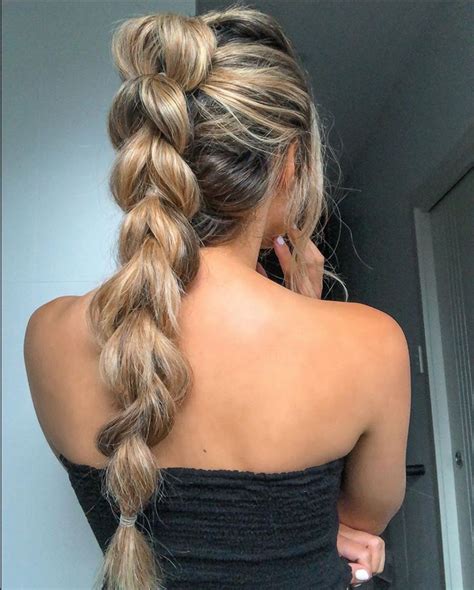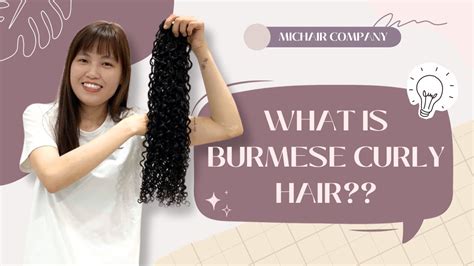Introduction
With its distinctive ringlets and luxurious texture, Burmese curly hair is a captivating trait that has captivated hearts for centuries. This article delves into the fascinating world of Burmese curly hair, exploring its genetics, cultural significance, and captivating characteristics.

Genetics of Burmese Curly Hair
Burmese curly hair is a dominant genetic trait, inherited from a single gene called TRPV3. This gene encodes a protein that regulates hair shaft shape and texture, resulting in the formation of tightly coiled curls. The curly gene is expressed in various ethnic populations, including those of African, South Asian, and Middle Eastern descent.
Cultural Significance of Burmese Curly Hair
Throughout history, Burmese curly hair has held cultural and social significance. In ancient Burma (present-day Myanmar), curly hair was considered a symbol of beauty and royalty. It was often adorned with elaborate hairstyles and embellished with jewelry. In some cultures, curly hair was associated with wisdom, intelligence, and spiritual enlightenment.
Captivating Characteristics of Burmese Curly Hair
1. Ringlets and Curls:
Burmese curly hair is renowned for its tight ringlets and defined curls. These curls can vary in size and shape, ranging from small, tightly coiled spirals to larger, looser waves.
2. Texture and Volume:
The texture of Burmese curly hair is typically coarse and wiry, contributing to its voluminous appearance and unique bounce.
3. Moisture Retention:
The tightly coiled structure of Burmese curly hair allows for excellent moisture retention. This natural hydration helps keep the hair healthy and prevents dryness.
4. Versatility:
Burmese curly hair is incredibly versatile, offering endless styling options. It can be worn loose and natural, styled into sleek buns, or braided into intricate designs.
Benefits of Burmese Curly Hair
1. Unique Beauty:
Burmese curly hair is a striking and distinctive trait that enhances one’s natural beauty. It adds character and personality to any hairstyle.
2. Low Maintenance:
Due to its natural moisture retention, Burmese curly hair requires less frequent washing and maintenance. It can be styled with minimal products, saving time and effort.
3. Heat Resistance:
The coarse texture of Burmese curly hair makes it heat-resistant. It can withstand blow-drying and heat styling tools without significant damage.
Common Mistakes to Avoid
1. Over-Brushing:
Excessive brushing can damage Burmese curly hair, causing breakage and frizz. It is recommended to use a wide-tooth comb to detangle the hair gently.
2. Using Harsh Products:
Avoid harsh shampoos and styling products that can strip the hair of its natural oils. Opt for mild, moisturizing products specifically designed for curly hair.
3. Not Deep Conditioning:
Burmese curly hair needs regular deep conditioning to maintain its moisture and prevent dryness. Deep conditioning masks can be applied weekly or bi-weekly to revitalize the hair.
Pros and Cons of Burmese Curly Hair
Pros:
- Unique and captivating
- Versatile styling options
- Low maintenance
- Heat-resistant
Cons:
- Can be prone to dryness
- May require specialized hair care products
- Requires regular detangling
Frequently Asked Questions (FAQs)
1. Can Burmese curly hair be straightened permanently?
While Burmese curly hair can be temporarily straightened with heat styling tools, there are no permanent straightening treatments that will alter its natural structure.
2. What is the best way to style Burmese curly hair?
Burmese curly hair can be styled using a variety of techniques, including finger curling, scrunching, and twisting. Avoid using heat styling tools too often, as this can damage the hair.
3. How often should I wash Burmese curly hair?
Depending on the individual’s hair type and scalp condition, Burmese curly hair can be washed as often as daily or as infrequently as weekly. It is important to avoid washing the hair too frequently, as this can strip it of its natural oils.
4. Are there any specific products recommended for Burmese curly hair?
There are a range of products specifically designed for curly hair, including shampoos, conditioners, styling creams, and deep conditioning masks. Look for products that are moisturizing and sulfate-free.
5. Can I dye Burmese curly hair?
Burmese curly hair can be dyed, but it is important to use a gentle, ammonia-free dye. Coloring the hair can alter its texture and make it more prone to breakage.
6. How do I protect Burmese curly hair from damage?
To protect Burmese curly hair from damage, avoid using harsh products, heat styling tools, and excessive brushing. Regular deep conditioning and using a silk or satin pillowcase can also help prevent breakage.
Conclusion
Burmese curly hair is a captivating and unique trait that has fascinated cultures for centuries. Its ringlets, texture, and versatility make it both a source of pride and a beautiful expression of individuality. By understanding its genetics, cultural significance, and proper care techniques, individuals can embrace the beauty of Burmese curly hair and maintain its health and vitality.
